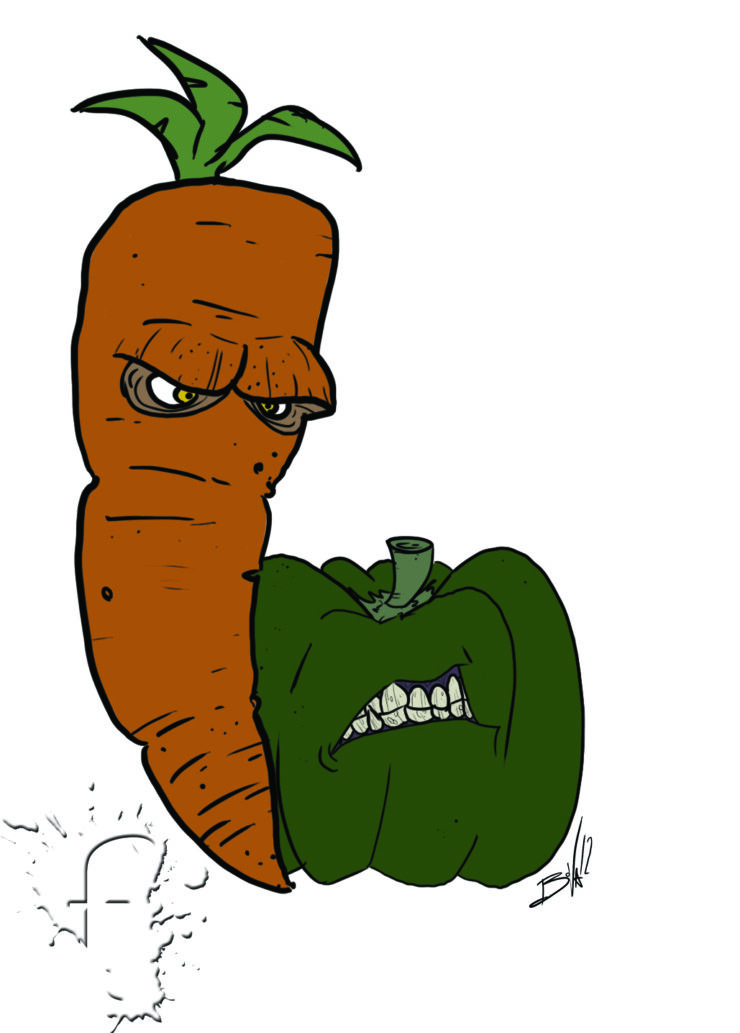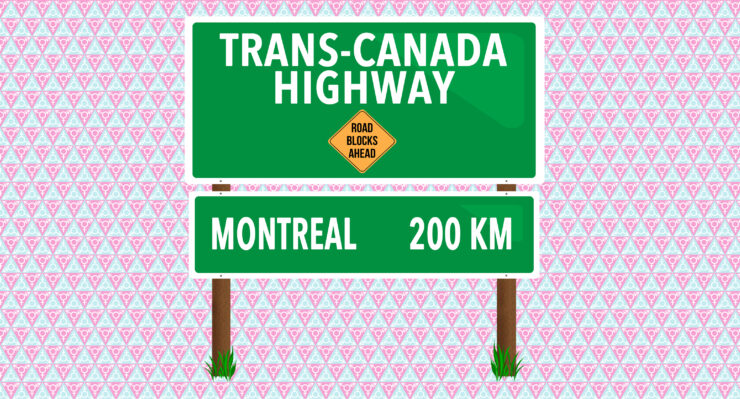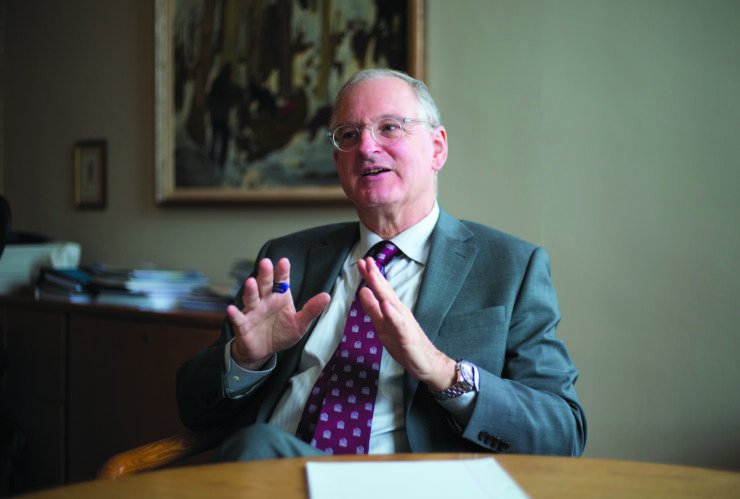Moussa Sangaré-Ponce explores the challenges he and many other U of O students have had to overcome as black Canadians
Photo illustration by Marta Kierkus
I’m not sure I remember the very first time I experienced racism or discrimination.
It must have happened sometime growing up in Montreal or at some point early on after my family moved to rural Nova Scotia. But one experience in high school stands out whenever I think about how I’m treated as a black man.
I went to École secondaire de Clare in Nova Scotia and represented the better part, if not all, of its black student population during my time there. There was also an English high school nearby that the other black kids in the area attended.
There was tension between the two schools. Both represented specific communities: the English school represented Weymouth, while the French represented Clare and the Acadian shores. On one level, the rivalry was between French and English, but there was also a racial connotation to it.
I was probably in ninth grade. It happened in the locker room prior to a hockey practice. The weekend earlier, one of my schoolmates had been assaulted by two black teens from the English school because he had called one of them a nigger.
Of course the incident was the topic du jour in the locker room, and one of my teammates asked which side I would take. “Are you with us or are you with them?”
Them, of course, didn’t refer to English-speaking people. After that day I became more aware of the racial differences between myself and the majority of the white community I grew up in. I found myself questioning the motive behind people’s actions and words more than I had before.
An unclear divide
For me, coming to the University of Ottawa was a drastic change. I went from a school of 260 students to a university of 40,000. I now share a campus and classes with other black men and women. I left a province where minorities represented 5.2 per cent of the province’s population to one where they represented 23 per cent. It was a welcome change.
In the midst of Black History Month, our student community at the U of O voted against the creation of a racialized student centre on campus. Creating this centre might have created discussion and brought more awareness about what it means to be a visible minority today. It could also have created a deeper divide and established racial barriers where there were none before.
Though the referendum failed for reasons we can only speculate, it’s clear that at least a significant body of students is thinking and talking about race issues on campus. After I came to Ottawa, there were times when I questioned whether my identity was tied to my skin colour. The nice thing about being part of this university is that I’ve come to realize I’m not the only one who’s dealt with these issues and asked the same questions.
Before Ottawa, black on black racism was something I had heard about but never witnessed. For Vanessa Dorimain, vice-president of university affairs elect for the Student Federation of the University of Ottawa (SFUO), it was part of her everyday life for 12 years.
At the age of eight, Dorimain moved from Ottawa to Florida, where there was a lot of racial tension, and not all of it black and white. Jamaican vs. Haitian and light-skin vs. dark-skin were two conflicts in which she was regularly involved.
She got into fights on almost a monthly basis because of her heritage and skin colour. Being of Haitian descent, she often found herself in physical altercations with people of Jamaican lineage. Other times, it was because she wasn’t dark enough. Being Canadian, she would also be the target of vitriol because some of her classmates felt she “spoke white” and was belittling them when she talked to them.
All of this made Dorimain angry. And she directed that anger toward white people.
“White people were the devil,” she says. “I felt like it was a white supremacy chain. You have the colonizers for instance and they divided all of us. They came to every single country and they instilled their knowledge on us and made us separate. In Florida I thought: This is the reason why these people act like this and this is why we hate each other.”
Today, Dorimain says she’s realized her anger at white people was more a product of her environment. She says she knows that racism still exists not solely because of white people, but because many have internalized the colonization ideology.
Welcome to Canada
Coming back to Canada was a transition for Dorimain because she says there was more solidarity between black people on this side of the border.
It was also a change for Justin Serresse, assistant coach of the Gee-Gees men’s basketball team, and David, a fourth-year student who requested the Fulcrum withhold his surname. When Serresse and David came to Canada, they were two of an average 250,000 people who each year become new residents of the country. Serresse, who has Cameroonian lineage, came from France about a decade ago. David, born in Nigeria, lived in Malaysia, Holland, and Scotland before arriving in the Toronto suburb of Richmond Hill five years ago.
Despite being of the opinion that Canada is still light years ahead of most other parts of the world in terms of dealing with racial discrimination, David says he’s “experienced just as much racism in Canada as anywhere else in the world, including Nigeria.”
Serresse noticed less racial tension in Canada, and says he faced adversity more often for not being able to speak English than because of his skin colour. He says he did witness racism when he came to Sudbury, but it wasn’t towards black people; what shocked him the most was the hate and discrimination dealt to indigenous peoples.
Having gone through Europe, both men say that multiculturalism in Canada is a big factor in calming the racial atmosphere.
“Europe has a different climate towards racism,” says David.
“Europe is the birthplace of democracy and diplomacy, but is structurally still very racist.”
“North America does a better job to encompass all opinions and to challenge the problem.”
Serresse, who only realized that he experienced racism as a youth after being away from France, now feels bitterness thinking of his childhood. He says he was treated like he was part of an inferior class.
Despite understanding these events now, at the time he tried to not pay attention to the prejudice. But it was sometimes impossible to ignore as he began playing basketball in the pro-am circuit.
“In northern France, their mindset is very archaic,” he says. “They (the fans) made monkey noises.”
Taught or experienced
The concept of racism can be taught two ways: either told to you, or by experiencing it firsthand. My father told me about pioneers and icons such as Malcolm X and Nelson Mandela and the struggles they faced. But his words didn’t really resonate until I experienced racism myself.
David’s parents also explained the notion of racism and discrimination to him at a young age, but “they never made it adversary,” he says. They told him: “This is the way it is. It happens sometimes, but you got to rise above that.”
Serresse’s parents never taught him about racism, he says, but there was palpable resentment towards him from his father’s side of the family—his father is from Cameroon—because they felt they were treated unequally and hadn’t received some of the social advantages he had growing up.
Sakinna Gairey, a second-year public relations student at the U of O, says her parents were very conscious of teaching her about racism. But she first remembers becoming “racially aware” at the age of five, when she was called a terrorist in the grocery store following the 9/11 attacks.
Dorimain felt alone when she had to learn about discrimination. Her father tried to paint a pretty picture of the world, telling here all humans are equal, while her mother kept her thoughts on the matter internalized. She later learned that her father dealt with a lot of hate and tried not to pass it on to his children.
Double standard and white acceptance
For many, being black also instils a double standard. Recent events in the United States such as the widely publicized deaths of Mike Brown, Trayvon Martin, and Eric Garner have suggested there’s a double standard in the way black people are perceived by authorities. Cultural events such as the Grammys and the Oscars have also been accused of snubbing black artistry. The Academy has come under fire recently for the noticeable lack of diversity in this year’s nominees.
The double standard goes beyond perception: it’s also about time and effort. Some black people may feel that twice as much effort has to be given in order to receive the same rewards that a white person would get. For instance, a study published by the Washington Post shows that a black man with a bachelor’s degree has the same chances of obtaining work as a white male college dropout.
When Maya McDonald learned about racism from her parents, she also learned about this double standard. She recalls them saying, “While I could be very talented and be able to do so many things, I’ll have to work twice as hard or more to compare to my white friends.” McDonald, the SFUO’s vice-president of equity, says she felt that pressure during her time with the student federation.
“I work with some amazing people, but I feel as though I have to put in extra effort to make my opinions heard,” she says. “A white person could say the exact same thing (I said), and we’re jumping into how can we make it happen.”
White acceptance is a concept that still confuses Vanessa Dorimain. She says many previously ignored or stigmatized cultural items historically attached to being black, such as types of music and dance, are now finding wider social recognition because an influential white person made it OK. Although she’s “not hating them for something we always had,” Dorimain says she finds that “white people have to endorse everything sometimes for people to accept it.”
The bias in expectations of black people goes both ways, according to David. “You could underperform and still get promoted because you’re black,” he says. “You could over-perform and still get devalued somehow.” On the other hand, Serresse says he never felt these expectations; language was his only barrier.
Racism or ignorance
A study done at York University showed that non-black students are not emotionally distressed and are unlikely to respond to racism when witnessing it. David says that when faced with racism, you shouldn’t feel like you have to devolve to its level or feel like you have to responsd. “You have to rise above that,” he says.
Serresse adds that racism is not only a form of ignorance, but also fear. “Not understanding has an anxious effect (on people),” he says.
McDonald says it’s OK to be uncomfortable when discussing racism because “if they are not uncomfortable, they aren’t understanding.”
What does it mean to be black? I haven’t found an answer to my question, but I did learn that for some, race is a bigger issue than others. Being black is not something that should be defined for you, but something you have to determine yourself.
Back home, I always tried to break away from stereotypes attached to black people because it would help me fit in. Now I realize by doing that I was denying part of who I am.
I try to not think about racial perception, but it’s easier said than done. My skin colour does not define me, but it has in many ways






